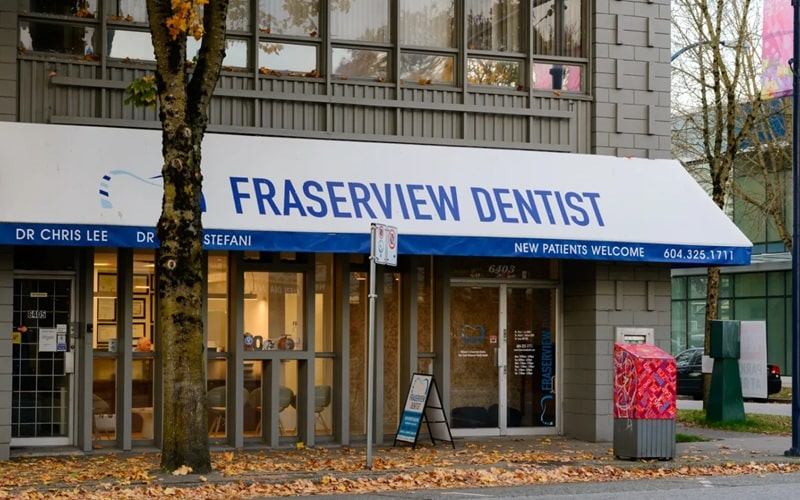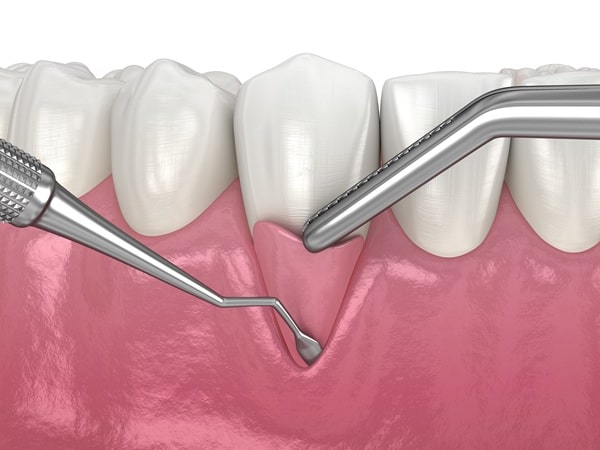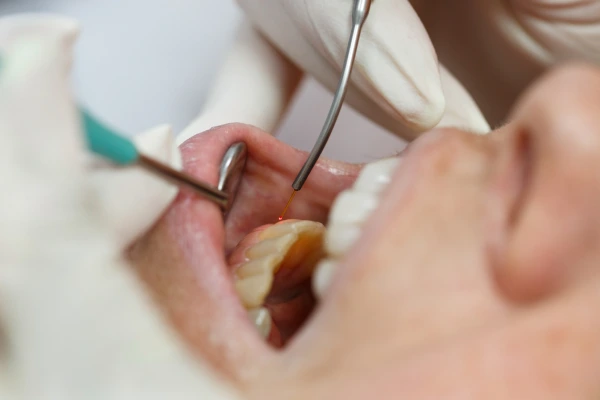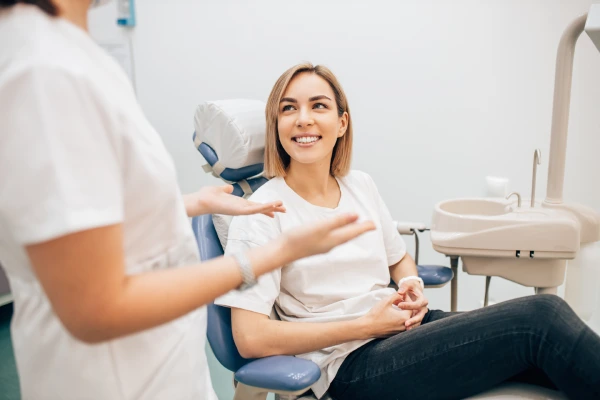Fraserview Dentist
Gum Grafting in South Vancouver
Why Should I Consider Gum Grafting? Your South Vancouver Gum Graft Specialist Explains
When we begin to lose gum tissue, it will never grow back by itself. This can lead to sensitivity to cold or hot food, pain when brushing, and even damage to the supporting bone. If you have receding gums, your dentist may recommend a gum tissue graft.
Learn more about the causes of gum recession and how your South Vancouver gum graft professionals perform this procedure so you can decide if it is right for you.
What Is Gum Grafting?
Gum grafting is a dental procedure that can help correct receding gums. Gum recession occurs when the gum tissue that surrounds the teeth pulls back or wears away. This exposes more of the tooth’s root and causes gaps to form between the gum line and the teeth. If bacteria begin to build up in these gaps, the bone structure and supporting tissue around the teeth can become severely damaged. This may result in tooth loss. Your South Vancouver gum graft professionals can help you with this.
How Gum Recession Occurs
Gum recession is a common dental problem that can affect anyone. In fact, between 4 to 12% of adults experience gum recession. Gum recession is often not noticed until it becomes severe, and a variety of issues can cause the recession to occur. One of the main causes of gum recession is periodontal disease, also known as gum disease. Periodontal disease is a bacterial gum infection that destroys the supporting bone and gum tissue that hold your teeth in place.
However, periodontal disease isn’t the only issue that can cause gums to recede. Other factors can include:
Aggressive Tooth Brushing
Hormonal Changes
Grinding Or Clenching Your Teeth
Tongue Or Lip Body Piercings
Genetics
Insufficient Dental Care
Braces
Different Types of Gum Tissue Grafts
There are three different types of gum tissue grafts that dentists typically perform: connective tissue grafts, free gingival grafts, and pedicle grafts. Since each graft takes care of different issues, your South Vancouver gum graft specialist will work with you to decide which graft will best suit your needs.
Connective Tissue Graft
A connective tissue graft is the most common type of gum graft used to treat tooth root exposure. During the procedure, your dentist will open a small flap in the roof of your mouth to remove a piece of connective tissue called the subepithelial connective tissue. This connective tissue is then stitched to the gum tissue around the exposed root, and the flap in the roof of your mouth is stitched back down.
Free Gingival Graft
Like the connective tissue graft, a free gingival graft uses tissue from the roof of your mouth. However, instead of creating a flap to remove connective tissue, your dentist will remove a small amount of tissue directly from the roof of your mouth and attach it to the area being treated. The free gingival graft method is most often used on people who have thin gums and need more tissue to help enlarge their gums.
Pedicle Graft
During the pedicle graft procedure, tissue is taken from the gum near the area that needs repair. This flap, which is called a pedicle, is partially cut away so one edge remains attached. It’s then pulled over the exposed tooth root and sewn into place. Only people who have plenty of gum tissue near the tooth can qualify for a pedicle graft.
How to Prepare for a Gum Graft
Preparation prior to the gum graft is minimal. You won’t need to fast or change your diet. During the procedure, your dentist might administer a sedative to help you relax and medication for pain and discomfort, so you’ll need to arrange for a ride home. Your dentist will also give you instructions on how to handle diet, exercise, and medications after your procedure.
You won’t be able to floss or brush the gum line where the graft occurred until it has healed. During this time, you may be given an antiseptic mouthwash to help clear away bacteria. For about two weeks after the graft, you’ll need to eat soft, cool foods, such as cottage cheese, yogurt, pasta, eggs, gelatin, pudding, cooked vegetables, and ice cream.
Dental Care After Gum Graft Surgery
While gum grafts can help repair gum recession, you need to keep up with proper dental care after the surgery to make sure future problems don’t arise. In addition to regular dental checkups, you also want to make sure you floss daily, brush twice a day, and rinse with an antiseptic mouthwash once or twice a day. Staying away from tobacco products and eating a healthy diet can also help you prevent further damage.
If you’re dealing with a receding gum line, gum grafting might be the solution you need to help relieve your pain and sensitivity. Contact Fraserview Dentist today to discuss this procedure with our dentists and see if it’s the right option for you.
Accepting New Patients
Let us help you feel at ease every step of your dental visit, from start to finish with care you can trust.







